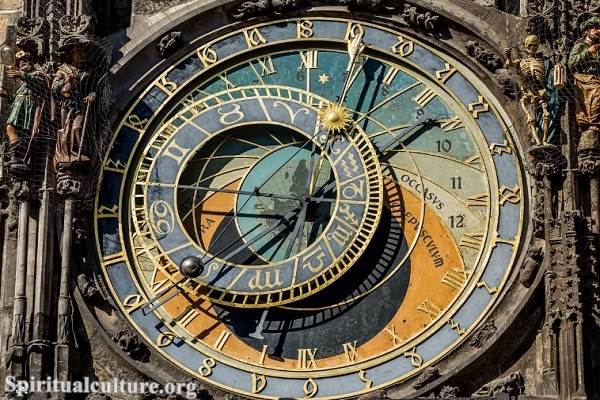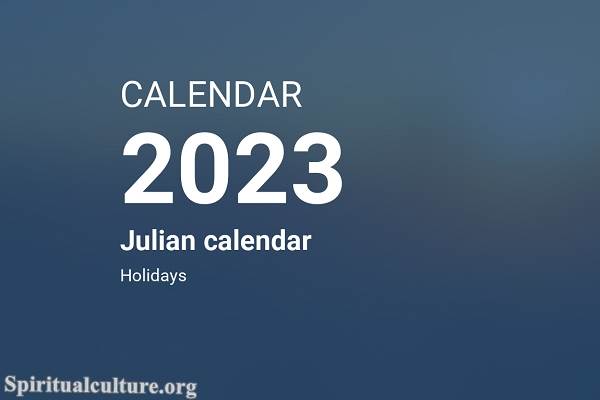The Gregorian calendar is a cornerstone of modern timekeeping, providing a framework for daily life, governance, and cultural celebrations worldwide. But what is the Gregorian calendar based on?
In this article, Spiritual Culturell explore the historical origins, structure, and cultural influence of the Gregorian calendar, addressing its significance and how it compares with other timekeeping systems.
Historical Origins of the Gregorian Calendar
The Gregorian calendar’s timeline begins in antiquity, influenced by various civilizations and their methods of tracking time. Understanding its historical origins requires examining the reforms instituted by Pope Gregory XIII and the transition from its predecessor, the Julian calendar.
Reforms Introduced by Pope Gregory XIII
The Gregorian calendar was introduced by Pope Gregory XIII in October 1582. The primary motivation for its development was to correct flaws in the Julian calendar, which had been in use since 45 BCE. The Julian calendar calculated the solar year as 365.25 days by adding a leap year every four years. However, this system caused a drift over centuries, as the actual solar year is about 365.2425 days long.
As a result, the calendar was slowly falling out of sync with the seasons. By the mid-16th century, it was approximately 10 days behind, causing issues for agricultural scheduling and religious observances. Pope Gregory XIII aimed to realign the calendar with the equinoxes, ensuring that the dates of key events like Easter remained consistent with the changing seasons.
In October 1582, the Gregorian reform omitted 10 days: October 4 was followed by October 15. Additionally, Pope Gregory established new leap year rules, limiting the frequency of leap years to correct the remaining drift in years to come.
Transition from the Julian to the Gregorian Calendar
The transition from the Julian calendar to the Gregorian calendar was not instantaneous and varied by region. Following its introduction in Catholic regions, countries such as Italy, Spain, Portugal, and France quickly adopted the new system.
Protestant nations were initially resistant, viewing the calendar as a Papal instrument. England, for instance, did not adopt the Gregorian calendar until 1752, when September 2 was followed by September 14, missing 11 days in the process. The gradual acceptance of the Gregorian calendar reflects broader geopolitical and religious dynamics of the time.
Today, most around the world use the Gregorian calendar, although some regions still maintain unique calendrical systems for cultural or religious purposes.
Adoption Timeline Across Different Countries
Here’s a summary of when several key countries adopted the Gregorian calendar:
- Italy, Spain, Portugal, France: October 15, 1582
- Austria, Germany, Switzerland: 1583
- Netherlands: 1582-1700 (varied by region)
- England and its colonies: September 14, 1752
- Russia: 1918
- Turkey: 1926
- China: 1949 (for civil purposes, traditional calendars still in use for cultural events)
This gradual adoption underscores the socio-political complexities of the calendar’s history, with various motivations affecting the speed of transition.
Structure and System of the Gregorian Calendar
Understanding the structure and operational mechanics of the Gregorian calendar provides insights into how this system governs our perception of time.
Solar Year and Its Calculation
The Gregorian calendar is primarily based on the solar year, which is the time it takes for Earth to complete its orbit around the Sun. This period is approximately 365.2425 days.
To accommodate this reality, the Gregorian calendar comprises 12 months—28 to 31 days each. Regular years consist of 365 days, while leap years have 366 days to compensate for the extra fraction of the year—an essential adjustment to maintain seasonal alignment.
Months and Days Distribution
The distribution of months in the Gregorian calendar is as follows:
- January – 31 days
- February – 28 days (29 in leap years)
- March – 31 days
- April – 30 days
- May – 31 days
- June – 30 days
- July – 31 days
- August – 31 days
- September – 30 days
- October – 31 days
- November – 30 days
- December – 31 days
This arrangement results in a cycle of 365 days in a normal year and 366 days in a leap year, maintaining a year structure that is adequately reflective of Earth’s trip around the Sun.
Leap Year Rules and Adjustments
The Gregorian calendar employs specific rules to determine leap years, necessary for keeping the calendar aligned with the solar year:
- Every year divisible by 4 is a leap year.
- However, years divisible by 100 are not leap years unless they are also divisible by 400.
This means that the year 2000 was a leap year, while the year 1900 was not. The application of this rule mitigates the annual discrepancy even further and keeps the calendar aligned with astronomical realities across centuries.
Scientific Basis of the Gregorian Calendar
While the Gregorian calendar is notable for its cultural implications, it is also rooted in scientific principles that govern how we measure time.
Accuracy of the Solar Year Measurement
The Gregorian calendar’s leap year system demonstrates a sophisticated approach to measuring the solar year. The shift from the Julian to the Gregorian system reflects a more accurate understanding of the Earth’s orbit:
- Julian Calendar: 365.25 days/year (leads to 11 minutes error per year)
- Gregorian Calendar: Corrected to 365.2425 days/year
This improvement minimizes the drift that would otherwise accumulate over centuries, allowing for greater consistency in seasonal alignment.
Differences from the Julian Calendar
The Julian calendar systematically overestimated the length of the solar year due to its rounding to the nearest quarter rather than making more precise adjustments. The main differences include:
- Leap Year Calculation: The Gregorian calendar introduces a more nuanced formula that omits leap years in some instances.
- Structure: The total number of days added and distribution across months account for the misalignments observed in the Julian system.
These differences highlight the advancements in astronomical observation and application of mathematics, ensuring that the Gregorian calendar remains effective for global use.
Cultural and Global Influence of the Gregorian Calendar
The widespread adoption of the Gregorian calendar has led to its integration into various aspects of modern life, making it an essential tool for communication and organization.
Usage in Modern Society
The Gregorian calendar plays a pivotal role in everyday life, business, and governance. Its global acceptance allows for standardized scheduling, international business compatibility, and synchronization of holidays and observances across different cultures.
Education systems, financial institutions, and governmental bodies rely on this calendar for structuring their activities, ensuring that societal functions operate smoothly and universally.
Comparison with Other Calendars
While the Gregorian calendar is predominant, several other calendar systems exist globally, such as:
- Islamic Calendar: A lunar calendar, shorter than the solar year, leading to a shift in annual observance dates.
- Hebrew Calendar: A lunisolar calendar, used primarily for Jewish religious observances with months that can vary between 29-30 days.
- Hindu Calendar: Represents a complex series of lunisolar months and varies regionally.
Each of these systems reflects the cultures and beliefs of their people and serves as a reminder of humanity’s diverse approaches to organizing time.
Role in International Standards (ISO 8601)
The Gregorian calendar has also influenced international standards, such as ISO 8601, which prescribes formats for representing dates and times.
Its dominance in technology and business emphasizes the need for coherence in global communication, thus further underpinning the relevance of the Gregorian calendar in contemporary society.
Key Dates and Events in the Gregorian Calendar
Alongside its operational structure, the Gregorian calendar also marks the passage of time through significant historical dates and events pivotal to world history.
Significant Dates of Transition
Significant dates accompanying the transition to the Gregorian calendar are essential markers for understanding this system’s history. The introduction of the calendar, alongside the adjustments countries made, delineates how societies adapt to change.
Notable dates include:
- October 15, 1582: The first day of the Gregorian calendar in countries that adopted it immediately.
- September 14, 1752: The date when England transitioned, illustrating national resistance and eventual acceptance.
- January 1, 1901: The first New Year’s Day under the Gregorian system for countries that had adopted it before this date.
Key Historical Events Aligned with the Calendar
Numerous pivotal historical events have aligned with the Gregorian calendar, demonstrating its centrality to societal progress. Key historical happenings include:
- The signing of the Treaty of Paris (1783): Ended the American Revolutionary War; its significance is enhanced by its timing on the calendar.
- World Wars: Each conflict is marked by time-bound events, illustrating how warfare intersects with the structures of society.
- Modern technological advancements and space exploration: Scheduled endeavors showcasing humanity’s collective efforts toward progress resonate within the calendar’s framework.
The Gregorian calendar acts not merely as a practical tool but as a narrative device that tells the story of humanity’s journey through time.
In conclusion, the Gregorian calendar is based on a complex interplay of historical, scientific, and cultural influences. By examining its origins, structure, and the impact on societies, we find compelling evidence of how this calendar shapes our understanding of time fundamentally and irrevocably across the globe.





